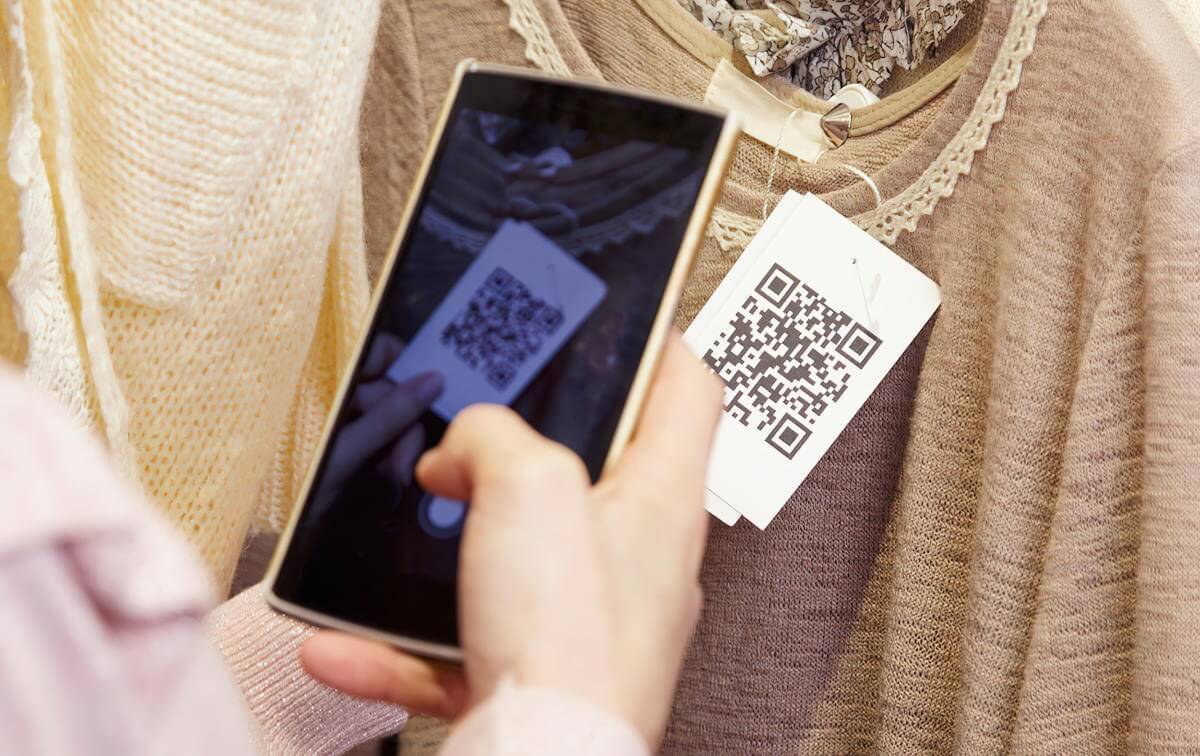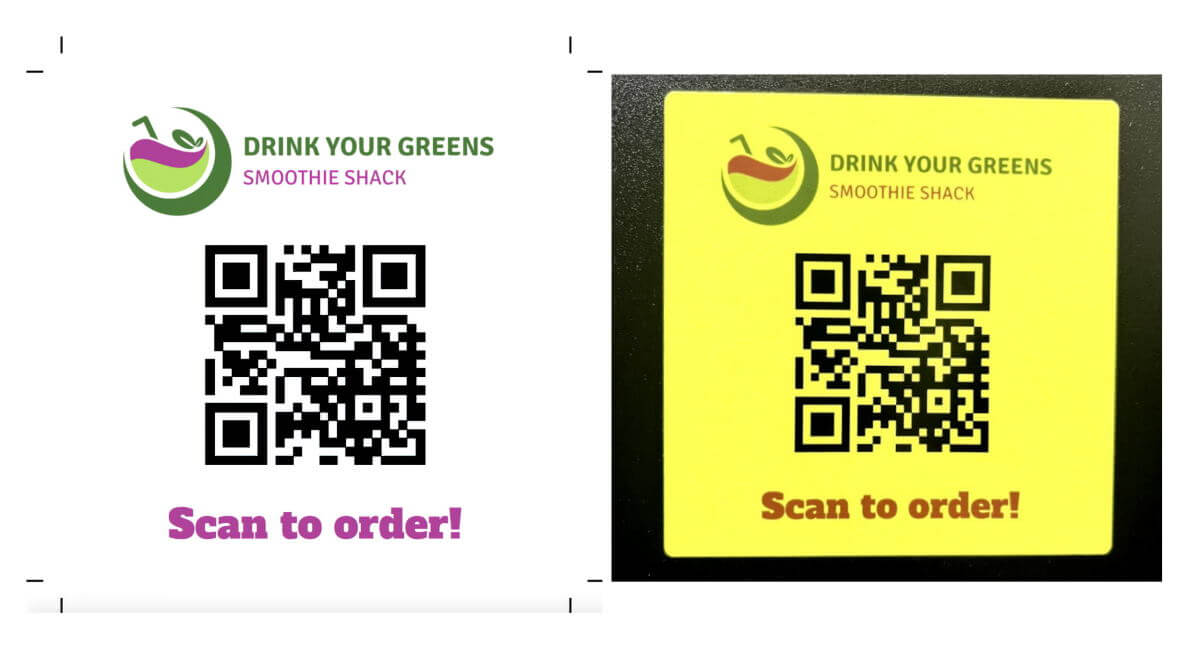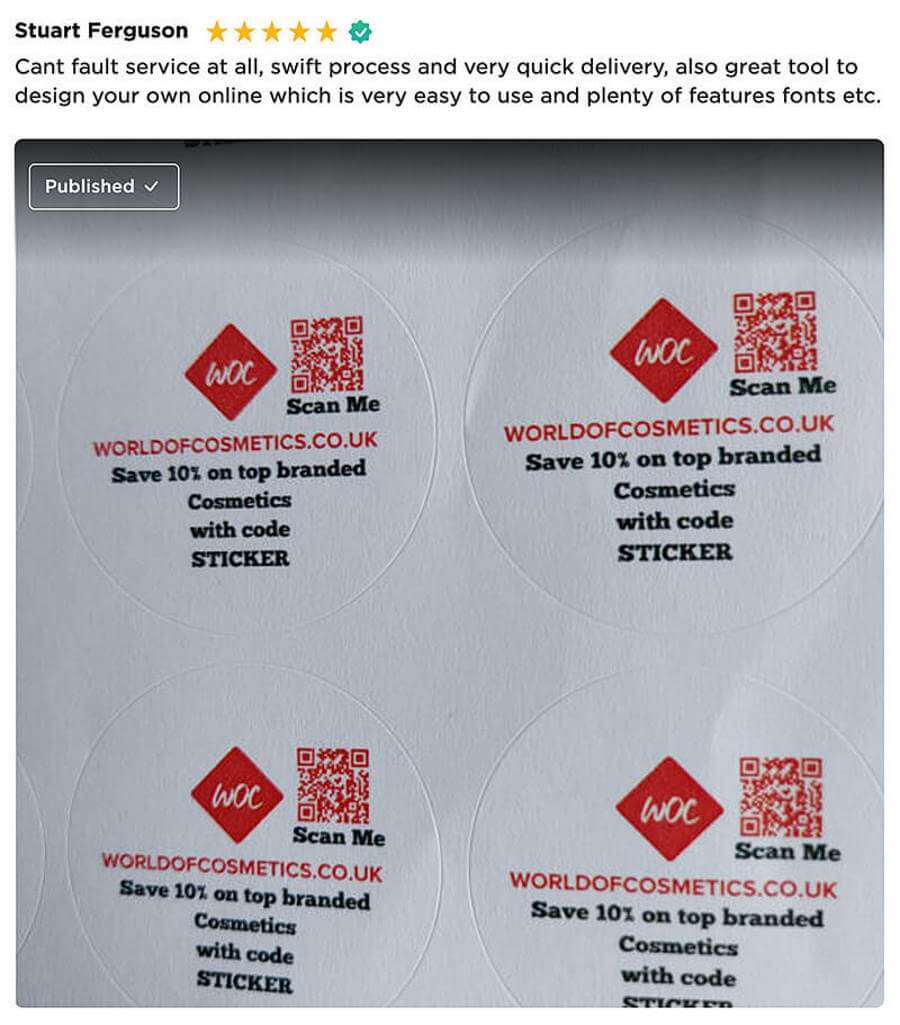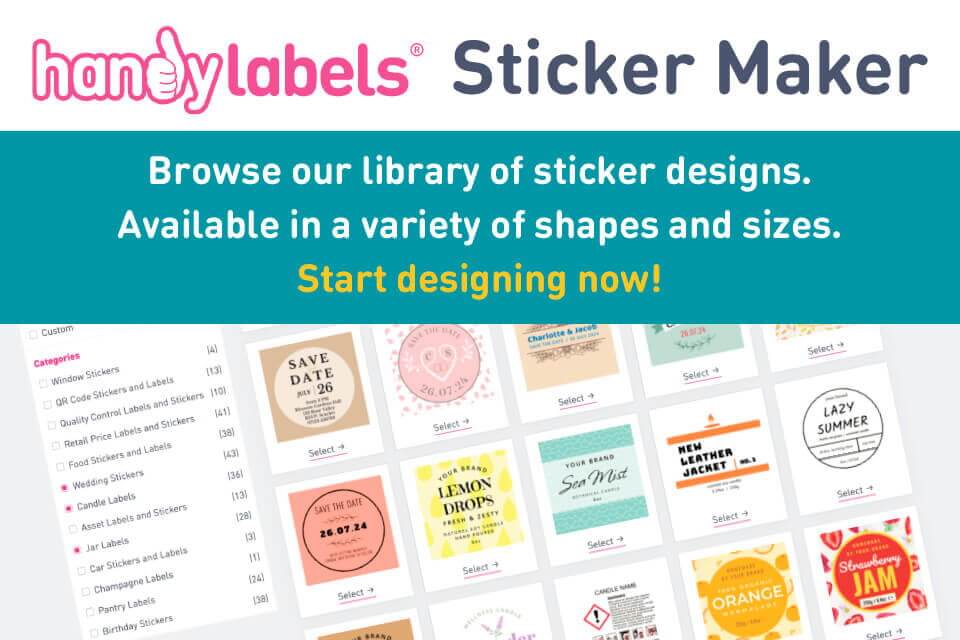Explore our guide on QR codes in marketing. Use the table of contents below for easy navigation through the different sections.
- What are QR Codes and How Do They Work?
- Applications of QR Codes in Marketing
- Successful QR code campaigns in various industries
- Benefits of QR code stickers and labels
- Best practices for implementing QR codes effectively
- Measuring the effectiveness of QR code campaigns
- Statistics on QR code usage and Effectiveness
- The Future of QR Codes in Marketing
What are QR Codes and How Do They Work?
The importance of QR codes within Digital marketing has been steadily increasing for years. But, with monumental events like COVID-19 escalating their prevalence in our daily lives, more and more companies see their benefits. From sharing helpful details, storing ticket information at events, or allowing for contactless ordering at restaurants, you'll find QR codes everywhere.
What are QR codes?
The shortened term 'QR Codes' stands for quick response codes, earning their name and popularity from how quickly smartphones can read them. They are two-dimensional barcodes which provide users with fast access to digital content.
How QR codes work
A QR code is a machine-scannable image. They were initially developed by Denso Wave, a subsidiary of Toyota, in Japan in 1994. Unlike regular barcodes, they can be read using a smartphone camera, giving people instant access to the information they hold. Your smartphone camera will read the code, providing you with a way through to its content. If that's a URL, the URL will appear, allowing you to click it and open it using your default browser. The black squares and dots used to make up your QR codes act like scripts to inform your phone what action it needs to take. The squares are a series of ones and zeros, representing binary data. This is then read and converted by the barcode reader into a string of text or URL.
Also, unlike one-dimensional barcodes, two-dimensional QR codes can store lots more information.
Applications of QR Codes in Marketing
Although they may be small, QR codes have a mighty impact in the digital marketing space. E-commerce businesses and brick-and-mortar stores are equally reaping the benefits. Due to their versatility and cost-effectiveness, they are commonly introduced to marketing strategies in the form of QR code stickers. Providing access to additional information is not their only purpose; they can link to social channels, cross-sell your other products or offer personalised discounts to loyal customers.
Product packaging
Adding a QR code to your product packaging labels allows for additional engagement from your customer. Too many return customers fall through the cracks as they forget about your brand after buying or receiving their item. Why not change that with a QR code that gives the customer a 20% discount code to use within a specific timeframe? Or one that invites them to create a customer account, giving them access to a loyalty points scheme for future purchases? From sticking a small quick response code to your product packaging, you have the potential to engage customers who already have an interest in your brand and inspire them to purchase again.

Be aware of the minimum size for QR codes on packaging. They won't be scannable if they're too small, making them useless. We recommend no smaller than 20mm x 20mm.
Flyers and brochures
Whether you're promoting a new product or service, or spreading the word about an upcoming event, printing a QR code on your flyers and brochures will help. They will provide the user with rapid access to the important information you want to share and could even allow them to add the event to their calendar!
Digital channels
-
Social media
We know how links can get lost in social posts, especially if hidden at the bottom of a caption. Why not incorporate a QR code in your visual? This lets customers quickly scan the code and access the landing page or additional information you are linking to. They can even be used to download an app, decreasing the chance of customers falling off of the conversion process.
One example was Burger King's US TV advert campaign in 2020. The fast-food restaurant chain encouraged customers to scan the QR code in their commercials, giving them a chance to win a free Whopper with a purchase on the Burger King App. It consisted of three adverts which all included a QR code. This giveaway wouldn't have worked without the QR code and demonstrates how big brands see their potential in digital marketing.
-
Email marketing
Incorporating a QR code into your email marketing campaign gives the recipient easy access to your landing pages. So whether the purpose of your email is to inspire more purchases or you want to provide your customers with educational content, QR codes are one of the easiest ways to access this information. In turn, it can help improve your click-through rate as you're making the details incredibly accessible.
-
Online advertising
Embed QR codes in display ads, banner ads, or sponsored posts to direct users to specific landing pages, promotional offers, or app downloads. By incorporating QR codes into your online advertising campaigns, you can create a more seamless experience for users and increase the chances of conversion.
-
Video marketing
Include QR codes in video content, such as YouTube videos, live streams, or webinars, to direct viewers to related resources, sign-up forms, or product pages. This can enhance the user experience by providing immediate access to relevant information without having to search for links in video descriptions or comments.
Who mostly uses QR codes?
Due to their accessibility and low cost, many industries implement QR codes into their digital marketing strategies.
It only takes revisiting your daily activities to see how often we interact with them in the modern world:
-
Marketing and advertising
You wake up and check your email inbox. An email comes through from your favourite activewear brand, which provides you with a QR code to redeem 20% off of your basket total. The QR code takes you to their website, and you purchase the pair of sports leggings you've had your eye on.
-
Cafes, bars and restaurants
You're up, dressed and ready for work. But first, you need a coffee. You head to your local coffee shop, scan the QR code menu sticker to order and wait patiently for your beverage. Once received, you notice another QR code on your coffee cup, allowing you to scan it and leave your local cafe a review.

-
Retail
On your way to work, you remember it's your best friend's birthday on the weekend. You dart into the local card shop. To your delight, you see a QR code sticker on the packaging giving you more information on the environmental credentials of the product you purchase.
-
E-commerce
After a busy start, you're finally at your desk. It's a big day today, the launch of your company's brand-new app. To announce your new product, you create a social media campaign featuring a QR code which users can scan to download the app. You also release an email marketing campaign featuring two QR codes this time, one to download the app and one to redeem VIP rewards.
You then head down to the warehouse to check stock, which is entirely labelled with QR codes to register and track inventory easily.
-
Transportation
It's been a long day, so you take public transport home. You scan a QR code to purchase a ticket, add it to your virtual wallet and climb aboard. Whilst travelling home, you notice a QR code which you can scan to contact the support team and provide you with additional travel information.
As you can see, they are a massive part of everyone's lives. Even beyond what we have explored above, QR codes can be used at Events, trade shows and within the hospitality industry to display event and location information, share it on socials or RSVP to events. Within the healthcare industry, to help implement social distancing protocols and improve the care process for patients or even by the Government to provide the public with information or collect feedback from initiatives.
Hotel and tourism, education, logistics management and data management are just a few of the remaining sectors enjoying the rewards of QR codes. Consider adding QR code car stickers to your company vehicles or QR asset labels to your company's assets to begin seeing their advantages.
If you'd like to start using QR codes but need help knowing where to begin, consider using QR code labels. You can create them using the QR code generator in our online design tool, removing the headache from the creation process.
Events and trade shows
2022 London Tech Week implemented QR codes to assist with event registration. It made the check-in process super simple for the guests and provided them with additional information about the event.
Retail
It is helpful to see how big brands incorporate QR codes, as it can inspire your marketing plan. In 2016, Supermarket star Tesco utilised a QR code-based payment system to simplify the checkout process. 'PayQwiq' helps to modernise their payment processes to keep up with our changing world.
Payment methods like google pay allow for printed QR codes, which you can put on a sticker and use within your shop or restaurant.
Benefits of QR code stickers and labels
Eco-friendly and sustainable
Printing QR codes on labels is an eco-friendly way to add them to your product, packaging or brick-and-mortar location. You can opt for environmentally friendly stickers for less strenuous uses. Or, if you do need to opt for a more durable laminated vinyl, rest assured that they will last for years, meaning you put less waste back into the environment. You can print QR codes onto stickers extremely easily with Handy Labels. With our variable data capabilities, we can even print different QR codes on each of your labels.
Durability
QR codes can be printed on various materials, our most robust being laminated vinyl. This material is waterproof, oilproof and scratch resistant. It will last for years, even if stuck outside, and is ideal as QR code menu stickers for bars, cafes and restaurants.
Our waterproof vinyl range is also strong but doesn't have a layer of over-laminate to protect your printed design like our laminated labels. This is an excellent choice for adding QR codes to your product packaging.
If you're after an eco-friendly option, our paper labels are superb. Remember, these are not waterproof, making them great for indoor use.
Versatility
Due to the vast material and adhesive range we offer, our QR code stickers can adhere to various surfaces. So be that company assets, restaurant tables, laptops or mobile phones, they can be easily stuck wherever needed.
We've made removing QR code stickers from certain surfaces as hassle-free as possible too. So whether you use hot soapy water, rubbing alcohol or white vinegar to remove them, you won't be left in a sticky situation. Check out our handy guide for further advice.

Best practices for implementing QR codes effectively
-
Ensure scannability
QR codes require contrast to scan well. Therefore, we recommend using a white background with a black QR code for optimum scannability. This means a user's device will quickly read the code, taking them to the information you are providing.
You should also consider the size of your QR codes. Mini QR code stickers will not scan as well as large ones. So we recommend staying clear of anything below 20mm x 20mm.
-
Provide clear instructions
It's essential to provide clear and easy-to-follow instructions for scanning and using your QR codes. This may only apply to potential customers unfamiliar with how they work. Still, you don't want to neglect certain customer groups. Providing simple but detailed information will help reduce frustration when using this new technology.
-
Linking to mobile-friendly landing pages
You also need to consider where your QR code will take the user. Make sure the landing page is optimised for mobile viewing. Test how quickly your page loads and how much information is on it to improve user experience. Customers do not want to wait for a page to load and then scroll and scroll to read all the information.
Measuring the effectiveness of QR code campaigns
To collect data from QR code scans, you will need to use a QR code generator and management platform that offers analytics and tracking features. These platforms create trackable QR codes, which can gather user data when scanned. Some examples would be QR Code Generator & QRcode Monkey. Remember that the specific features and data collection methods may vary depending on the QR code generator and management platform you choose. Also, remember that it is crucial to respect users' privacy and comply with applicable data protection regulations when collecting and processing personal information.
Tracking customer data
-
Scan timestamps
The date and time when the QR code was scanned. When a user scans the QR code, the platform records the date and time of the scan as part of the collected data. You can use the timestamp data to analyse the time-specific performance of your QR code campaign. For example, you can identify peak scanning times and use this information to optimise the timing of your marketing efforts, such as when to send out promotional emails, post on social media, or run print ads.
-
Device type
Information about the user's device, such as the make and model. For example, if you notice a high percentage of users scanning the QR code using Android devices, you might consider creating an Android-specific promotion or ensuring that your content is optimised for Android users.
-
Location data
Geographical information on where the QR code was scanned, if location services are enabled on the user's device.
-
User behaviour
Actions taken by the user after scanning the QR code, such as visiting a landing page, making a purchase, or signing up for a newsletter.
-
Referral source
The medium where the QR code was scanned, such as a specific print ad, packaging, or social media post.
Analysing campaign results
-
Number of scans
The total number of times the QR code was scanned, indicates the level of engagement with the marketing material.
-
Number of landing page visits
The amount of traffic generated to the designated landing page, provides insight into the effectiveness of driving users to the target content.
-
Conversions
The number of desired actions completed by users after scanning the QR code, such as making a purchase, subscribing to a newsletter, or downloading an app. This metric indicates the direct impact on achieving campaign objectives.
-
Sign-ups
The number of new subscribers or registered users gained through the campaign, shows the success in generating leads or growing a customer base.
-
Average time spent on the landing page
The amount of time users spend on the landing page. This metric can help assess the effectiveness of the content in capturing users' attention and interest.
-
Social media shares
The number of times the content linked to the QR code has been shared on social media platforms, indicates the campaign's reach and potential virality.
Statistics on QR code usage and Effectiveness
Increased adoption of QR codes
In a blog post by Scanova, we can see the increased adoption of QR codes. As a result of the COVID-19 pandemic, a survey conducted by Mobileiron reported that over 86% of smartphone users in the UK and Europe had scanned a QR code at least once in their life, and over 36% scanned at least one QR code per week. Furthermore, as found by Bluebite, QR code reach grew by 96% from 2018-2020.
These statistics answer the question, how important are QR codes in digital marketing? If you're considering running a local or global marketing campaign, consider adding a QR code. The likelihood of customers scanning it should only increase as QR Code usage is expected to soar further in the future.
Effectiveness of QR code campaigns in the UK
A study by Statista in 2016 found that 57% of consumers scanned a QR code on food products to get more information about them. Utilising a QR code allows your packaging to remain neat and clean in appearance, but still provides the customer with the additional information they want.
Huge brands are utilising QR codes; L’Oréal, Coca-Cola, Nike and Nestlé are only a few examples. If you’re in need of an extra nudge to create your QR code marketing campaign, see how some big names are doing it, and scale it back to your SMART goals.
The Future of QR Codes in Marketing
- Dynamic QR codes
You should look into the future when setting marketing plans and goals. A dynamic QR code may be an exciting alternative to a static one. Their benefit is that they can be edited or tracked after the QR code has been created. This gives it longevity, as you can use them to retarget online customers, change the data for asset management, or schedule marketing campaigns.
- Augmented Reality
You can even use QR codes to initiate an AR or augmented reality. When scanned, an AR code replicates an augmented reality 3D experience. This works well for retail companies, allowing customers to 'try on' items in their own homes.
Conclusion
Implementing QR codes in your marketing campaigns can significantly boost customer engagement and drive tangible results. By choosing Handy Labels as your partner in eco-friendly and durable sticker printing, you can unlock the full potential of QR code marketing and elevate your brand's marketing initiatives.
With the protection of our Handy Promise, our small minimum order quantity and rapid turnaround times, you have nothing to lose. Order QR code stickers with Handy Labels today!

